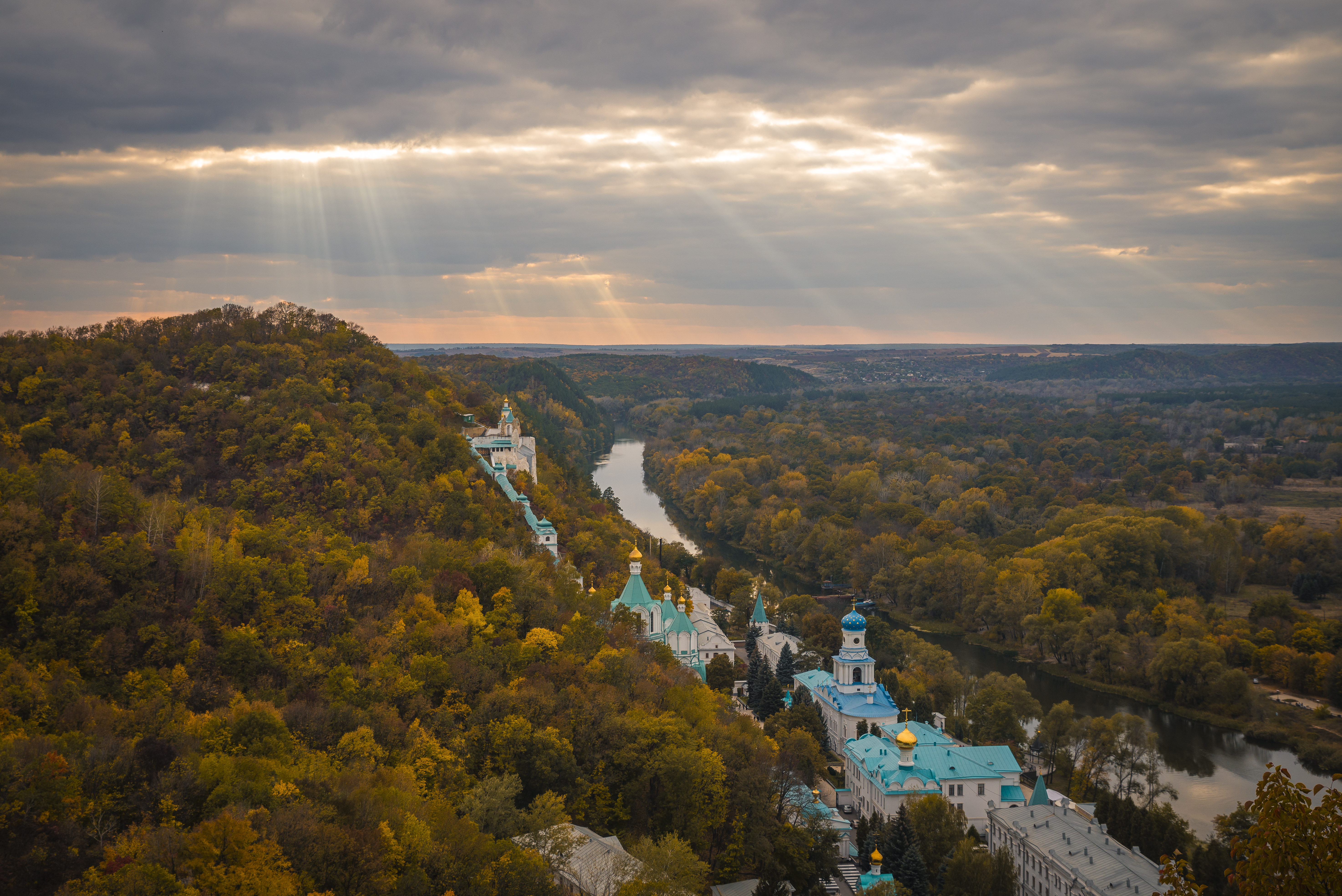|
Monastic Cell
A cell is a small room used by a hermit, monk, nun or anchorite to live and as a devotional space. Cells are often part of larger cenobitic monastic communities such as Catholic and Orthodox monasteries and Buddhist vihara, but may also form stand-alone structures in remote locations. The word ''cell'' comes from the Old French ''celle'' meaning a monastic cell, itself from the Latin meaning "room", "store room" or "chamber". In Christianity Usually, a cell is small and contains a minimum of furnishings. It may be an individual living space in a building or a hermit's primitive solitary living space, possibly a cave or hut in a remote location. A small dependent or daughter house of a major monastery, sometimes housing just one or two monks or nuns, may also be termed a cell. The first cells were in the Nitrian Desert in Egypt following the ministry of Paul of Thebes, Serapion, and Anthony the Great.Chryssavgis, John; Ware, Kallistos; Ward, Benedicta, ''In the Heart o ... [...More Info...] [...Related Items...] OR: [Wikipedia] [Google] [Baidu] |
Paul Of Thebes
Paul of Thebes (; , ''Paûlos ho Thēbaîos''; ; c. 227 – c. 341), commonly known as Paul the First Hermit or Paul the Anchorite, was an Egyptian saint regarded as the first Christian hermit, who was claimed to have lived alone in the desert of Thebes, Roman Egypt from the age of sixteen to the age of one hundred and thirteen years old. He was canonized in 491 by Pope Gelasius I, and is venerated as a saint by the Catholic Church, Eastern Orthodox Church, and Oriental Orthodox Churches. Legend The ''Life of Saint Paul the First Hermit'' was composed in Latin by Saint Jerome, probably in 375–376. Paul of Thebes was born around 227 in the Thebaid of Egypt. Paul and his married sister lost their parents. In order to obtain Paul's inheritance, his brother-in-law sought to betray him to the persecutors. According to Jerome's ''Vitae Patrum'' (''Vita Pauli primi eremitae''), Paul fled to the Theban desert as a young man during the persecution of Decius and Valerianus aro ... [...More Info...] [...Related Items...] OR: [Wikipedia] [Google] [Baidu] |
Lavra
A lavra or laura ( el, Λαύρα; Cyrillic: Ла́вра) is a type of monastery consisting of a cluster of cells or caves for hermits, with a church and sometimes a refectory at the center. It is erected within the Orthodox and other Eastern Christian traditions. The term is also used by some Roman Catholic communities. The term in Greek initially meant a narrow lane or an alley in a city.. History Byzantine laura/lavra From the fifth century the Greek term ''laura'' could refer specifically to the semi- eremitical monastic settlements of the Judaean Desert, where lauras were very numerous. The first lauras of Palestine were founded by Chariton the Confessor (born 3rd century, died ca. 350): the Laura of Pharan (now Wadi Qelt) northeast of Jerusalem, the Laura of Douka on the Mount of Temptation west of Jericho, and Souka Laura or Old Laura in the area of Tuqu' in Wadi Khureitun. Saint Euthymius the Great (377–473) founded one of the early lauras in fifth-century P ... [...More Info...] [...Related Items...] OR: [Wikipedia] [Google] [Baidu] |
Therapeutae
The Therapeutae were a religious sect which existed in Alexandria and other parts of the ancient Greek world. The primary source concerning the Therapeutae is the ''De vita contemplativa'' ("The Contemplative Life"), traditionally ascribed to the Jewish philosopher Philo of Alexandria (c. 20 BCE – 50 CE). The author appears to have been personally acquainted with them. The author describes the Therapeutae as "philosophers" (cf. I.2) and mentions a group that lived on a low hill by the Lake Mareotis close to Alexandria in circumstances resembling lavrite life (cf. III.22). They were "the best" of a kind given to "perfect goodness" that "exists in many places in the inhabited world" (cf. III.21). The author was unsure of the origin of the name and derives the name Therapeutae/Therapeutides from Greek θεραπεύω in the sense of "cure" or "worship" (cf. I.2). Philo's description of the doctrines and practices of the Therapeutae leaves great ambiguity about what religion they ... [...More Info...] [...Related Items...] OR: [Wikipedia] [Google] [Baidu] |
Orthodox Christianity
Orthodoxy (from Greek: ) is adherence to correct or accepted creeds, especially in religion. Orthodoxy within Christianity refers to acceptance of the doctrines defined by various creeds and ecumenical councils in Antiquity, but different Churches accept different creeds and councils. Such differences of opinion have developed for numerous reasons, including language and cultural barriers. In some English-speaking countries, Jews who adhere to all the traditions and commandments as legislated in the Talmud are often called Orthodox Jews. Eastern Orthodoxy and/or Oriental Orthodoxy are sometimes referred to simply as “Orthodoxy”. Sunni Islam is sometimes referred to as "orthodox Islam". Religions Buddhism The historical Buddha was known to denounce mere attachment to scriptures or dogmatic principles, as it was mentioned in the Kalama Sutta. Moreover, the Theravada school of Buddhism follows strict adherence to the Pāli Canon ('' tripiṭaka'') and the commentaries s ... [...More Info...] [...Related Items...] OR: [Wikipedia] [Google] [Baidu] |
Poustinia
A hermitage most authentically refers to a place where a hermit lives in seclusion from the world, or a building or settlement where a person or a group of people lived religiously, in seclusion. Particularly as a name or part of the name of properties its meaning is often imprecise, harking to a distant period of local history, components of the building material, or recalling any former sanctuary or holy place. Secondary churches or establishments run from a monastery were often called "hermitages". In the 18th century, some owners of English country houses adorned their gardens with a "hermitage", sometimes a Gothic ruin, but sometimes, as at Painshill Park, a romantic hut which a "hermit" was recruited to occupy. The so-called Ermita de San Pelayo y San Isidoro is the ruins of a Romanesque church of Ávila, Spain that ended up several hundred miles away, to feature in the Buen Retiro Park in Madrid. Western Christian tradition A hermitage is any type of domestic dwell ... [...More Info...] [...Related Items...] OR: [Wikipedia] [Google] [Baidu] |
Skete
A skete ( ) is a monastic community in Eastern Christianity that allows relative isolation for monks, but also allows for communal services and the safety of shared resources and protection. It is one of four types of early monastic orders, along with the eremitic, lavritic and coenobitic, that became popular during the early formation of the Christian Church. Skete communities usually consist of a number of small cells or caves that act as the living quarters with a centralized church or chapel. These communities are thought of as a bridge between strict eremitic lifestyle and communal lifestyles since it was a blend of the two. They were a direct response to the ascetic lifestyle that early Christians aspired to live. Skete communities were often a bridge to a stricter form of hermitage or to martyrdom. The Greek term skete (σκήτη, ''skḗtē'', ''skiti'') is most likely a reference to the Scetis valley in Egypt (Greek Σκήτις, from its Coptic name Ϣⲓϩ� ... [...More Info...] [...Related Items...] OR: [Wikipedia] [Google] [Baidu] |
Kathisma
A kathisma (Greek: κάθισμα; Slavonic: каѳисма, ''kai-isma''), literally, "seat", is a division of the Psalter, used in the Eastern Orthodox and Byzantine Rite Catholic churches. The word may also describe a hymn sung at Matins, a seat used in monastic churches, or a type of monastic establishment. Psalms According to ancient practice, monastics recite all 150 psalms on a regular basis. Originally, the hermits in the desert would recite the entire Psalter every day. With the spread of cenobitic monasticism, the practice began of chanting the Canonical Hours in common, and the Psalter thus became the foundation of the Daily Office, augmented by numerous hymns, prayers and scriptural readings. The custom grew of reciting all 150 psalms each week during the course of the services. To facilitate this, the 150 psalms were divided into 20 sections, called ''kathismata'' ( el, καθίσματα; chu, каѳисмы, . Meaning literally, "sittings". The name is derived ... [...More Info...] [...Related Items...] OR: [Wikipedia] [Google] [Baidu] |
Rainy Season
The rainy season is the time of year when most of a region's average annual rainfall occurs. Rainy Season may also refer to: * ''Rainy Season'' (short story), a 1989 short horror story by Stephen King * "Rainy Season", a 2018 song by Monni * '' The Rainy Season'', a 1993 album by Marc Cohn * ''The Rainy Season'', a 1999 novel by James Blaylock * ''Rainy Seasons'' (film), a 2010 Iranian film {{disambiguation ... [...More Info...] [...Related Items...] OR: [Wikipedia] [Google] [Baidu] |
Buddhism
Buddhism ( , ), also known as Buddha Dharma and Dharmavinaya (), is an Indian religion or philosophical tradition based on teachings attributed to the Buddha. It originated in northern India as a -movement in the 5th century BCE, and gradually spread throughout much of Asia via the Silk Road. It is the world's fourth-largest religion, with over 520 million followers (Buddhists) who comprise seven percent of the global population. The Buddha taught the Middle Way, a path of spiritual development that avoids both extreme asceticism and hedonism. It aims at liberation from clinging and craving to things which are impermanent (), incapable of satisfying ('), and without a lasting essence (), ending the cycle of death and rebirth (). A summary of this path is expressed in the Noble Eightfold Path, a training of the mind with observance of Buddhist ethics and meditation. Other widely observed practices include: monasticism; "taking refuge" in the Buddha, the , and the ... [...More Info...] [...Related Items...] OR: [Wikipedia] [Google] [Baidu] |
Carthusians
The Carthusians, also known as the Order of Carthusians ( la, Ordo Cartusiensis), are a Latin enclosed religious order of the Catholic Church. The order was founded by Bruno of Cologne in 1084 and includes both monks and nuns. The order has its own rule, called the ''Statutes'', and their life combines both eremitical and cenobitic monasticism. The motto of the Carthusians is , Latin for "The Cross is steady while the world turns." The Carthusians retain a unique form of liturgy known as the Carthusian Rite. The name ''Carthusian'' is derived from the Chartreuse Mountains in the French Prealps: Bruno built his first hermitage in a valley of these mountains. These names were adapted to the English '' charterhouse'', meaning a Carthusian monastery.; french: Chartreuse; german: Kartause; it, Certosa; pl, Kartuzja; es, Cartuja Today, there are 23 charterhouses, 18 for monks and 5 for nuns. The alcoholic cordial Chartreuse has been produced by the monks of Grande Chartreu ... [...More Info...] [...Related Items...] OR: [Wikipedia] [Google] [Baidu] |
Indiana
Indiana () is a U.S. state in the Midwestern United States. It is the 38th-largest by area and the 17th-most populous of the 50 States. Its capital and largest city is Indianapolis. Indiana was admitted to the United States as the 19th state on December 11, 1816. It is bordered by Lake Michigan to the northwest, Michigan to the north, Ohio to the east, the Ohio River and Kentucky to the south and southeast, and the Wabash River and Illinois to the west. Various Indigenous peoples of the Americas, indigenous peoples inhabited what would become Indiana for thousands of years, some of whom the U.S. government expelled between 1800 and 1836. Indiana received its name because the state was largely possessed by native tribes even after it was granted statehood. Since then, settlement patterns in Indiana have reflected regional cultural segmentation present in the Eastern United States; the state's northernmost tier was settled primarily by people from New England and New York ... [...More Info...] [...Related Items...] OR: [Wikipedia] [Google] [Baidu] |






